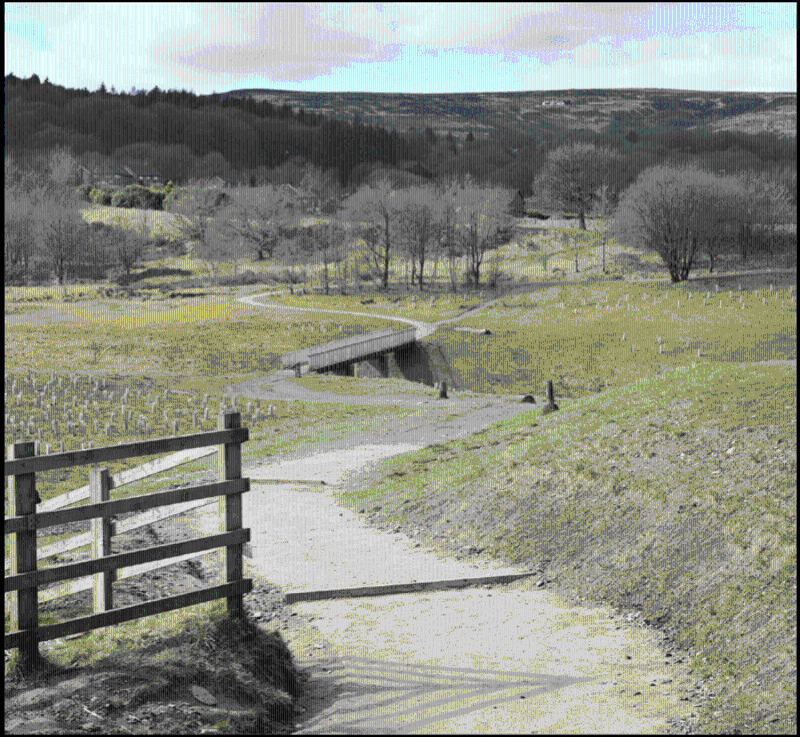
ATM maintain Jacks Key reservoir
Accredited Contractor, ATM has finished transforming the Jacks Key reservoir based in Lancashire, to maintain access to the plant, ATM installed ground protection mats, which reduce ground damage.
We have delivered landscaping enhancements and provide ongoing maintenance and cleansing services to Jacks Key reservoir in Darwen, Blackburn. The reservoir was decommissioned in 2005 and transformed into a wetland habitat. We are maintaining the wetland area and supporting the grounds maintenance through the following services:
- Grass cutting, including wildflower cut and collect and bulb / plug areas
- Hand weeding, litter picking and rock removal
- Strimming around plots and grass cutting
- Invasive weed treatment for Himalayan Balsam
- Wetland area maintenance.
- Tree plot thinning.
- Maintenance of feathered trees.

Challenge
The site is a former quarry and has a number of environmental and ecologically sensitive constraints which increase in complexity during extreme wet/extreme dry seasons as part of the wetland/ woodland restoration. Although accessible, many areas of the site are boggy, steep and uneven. To maintain access to the plant ATM installed ground protection mats, which reduce ground damage. ATM work with numerous stakeholders including the Environment Agency and St Barnabas CE Primary School (who were liaised with because the school is adjacent to the only site access). Giant Hogweed is an invasive species which is managed, with areas recorded and monitored as part of a wider plan.
Solution
Weeds and invasive weeds in wetland areas: These are hand pulled in September. All appropriate PPE and bio-secure measures are in place when removing weeds. Weeds are then deposited on the bankside for 24 hours to let all invertebrates back into the water. All arisings are collected and disposed of at the correct waste facility. Species include Typha Latifolia, their seed heads are removed and bagged prior to pulling Giant Hogweed Crassula Helmsii.
Litter picking: At the start of our quarterly maintenance visits, all areas are litter picked. This includes fallen branches. Hard surfaces are swept clean of soil/debris and litter. All litter is removed from the site and disposed of accordingly.
 Maintenance of feathered trees: All trees are regularly checked and firmed up. Any missing tree protection or supports are replaced. This is undertaken systematically, starting and finishing each area prior to moving on to the next. Tree stakes are hammered into the ground with tree tubes attached as tree protection.
Maintenance of feathered trees: All trees are regularly checked and firmed up. Any missing tree protection or supports are replaced. This is undertaken systematically, starting and finishing each area prior to moving on to the next. Tree stakes are hammered into the ground with tree tubes attached as tree protection.
Maintenance of grassed areas: Areas are cut using pedestrian walk-behind mowers. All staff are trained and competent to use grass-cutting machinery. The grass is strimmed around any furniture or obstructions. All arisings are left in situ with hard-standing, and areas are blown free using a hand-held blower.
Maintenance of bulb/plug areas: These areas are not cut prior to flowering. All areas are cut or strimmed by trained personnel and all arisings are left in situ.
Cutting wildflower meadows: Two cuts are performed per year using a pedestrian mower or strimmer. The first cut is in early May and the second cut is in mid-September, with both cuts taking place between 75mm and 100mm. All arisings from the first cut are raked off immediately and disposed of to the appropriate tip. Arisings from the second cut remain in situ until the seeds have been shed. Arisings are then raked and disposed of to the appropriate tip.
Tree thinning: Tree thinning is undertaken as agreed by NPTC-trained operatives. Attention is paid to dog rose, willow, hawthorn, blackthorn and hazel. Spacing is created to promote healthy crown growth. All arisings are stacked neatly within the tree plot.
